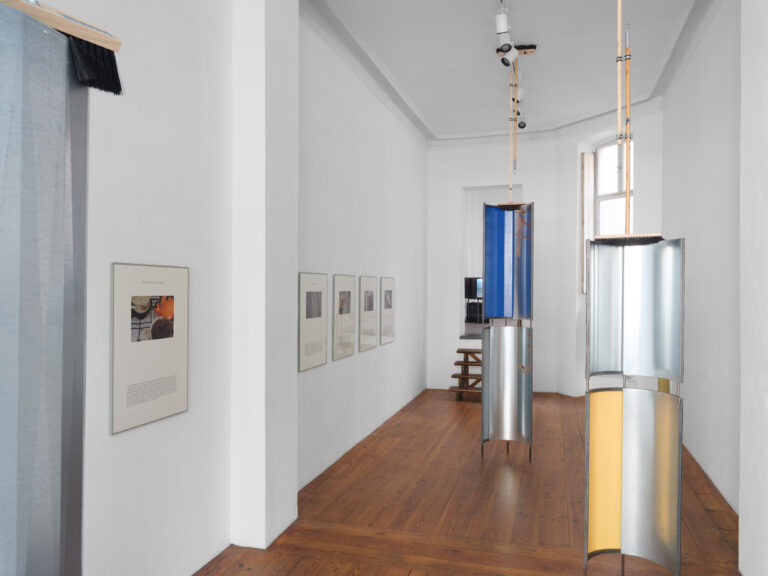Wilhelm Klotzek
Wartenberg
Gallery Openings—15 Sep 2023, 6 to 9 PM
In his works, Wilhelm Klotzek approaches the urban body in different ways. In the video News from the Underpass (2023), made in collaboration with Milan Herms, this happens very concretely. The film shows a person, riding a bicycle on and around the station Wartenberg in Berlin. However, the approach does not remain on the surface, but also takes place at a personal level. A voice narrates the film, reading a letter addressed to a flower seller in a shop in the station underpass.

Exhibition view Wilhelm Klotzek at Klosterfelde Edition, Copyright the artist, Courtesy Klosterfelde Edition

Copyright Wilhelm Klotzek, Courtesy Klosterfelde Edition
Klotzek performs another variation of the approach in Wartenberger Panels (2023). In short texts, he tells of the hidden art on buildings and of its rediscovery on Berlin’s Alexanderplatz. Analogies emerge between varicose veins and representations of history in the pictorial worlds of the painter Adolph Menzel. These narratives are paired with photographs of the interior life of an apartment. Provisional arrangements of unsorted piles of books or a kettle on the gas stove meet observations of Berlin’s urban space.
The three exhibited sculptures Hohenschönhausen, Gehrenseestraße and Springfuhl, (2023) resemble columns or isolated architectural elements. The surfaces of galvanized sheet steel are bent by hand, provided with precise patterns and partially painted. To bridge the supposed inadequacy of their function, Klotzek supplements the sculptures with brooms that reach up to the ceiling; and so it seems as if the sculptures keep the gallery ceiling from falling down.
In the exhibition, Klotzek moves through the urban body that surrounds and yet eludes us. Perhaps this is because it changes rapidly; the old is demolished and the new added. And in the end, a city is a big architectural provisional, whose body disintegrates and is reassembled.
This approach is described in the exhibition as a process that always has an inherent moment of failure. As in the video News from the Underpass, in which the person falls off its bicycle while trying to explore the Wartenberg S-Bahn station, or in the three sculptures Hohenschönhausen, Gehrenseestraße and Springfuhl, which are installed in the gallery space as provisional architectural structures, where it remains unclear what holds what.

Copyright Wilhelm Klotzek, Courtesy Klosterfelde Edition
